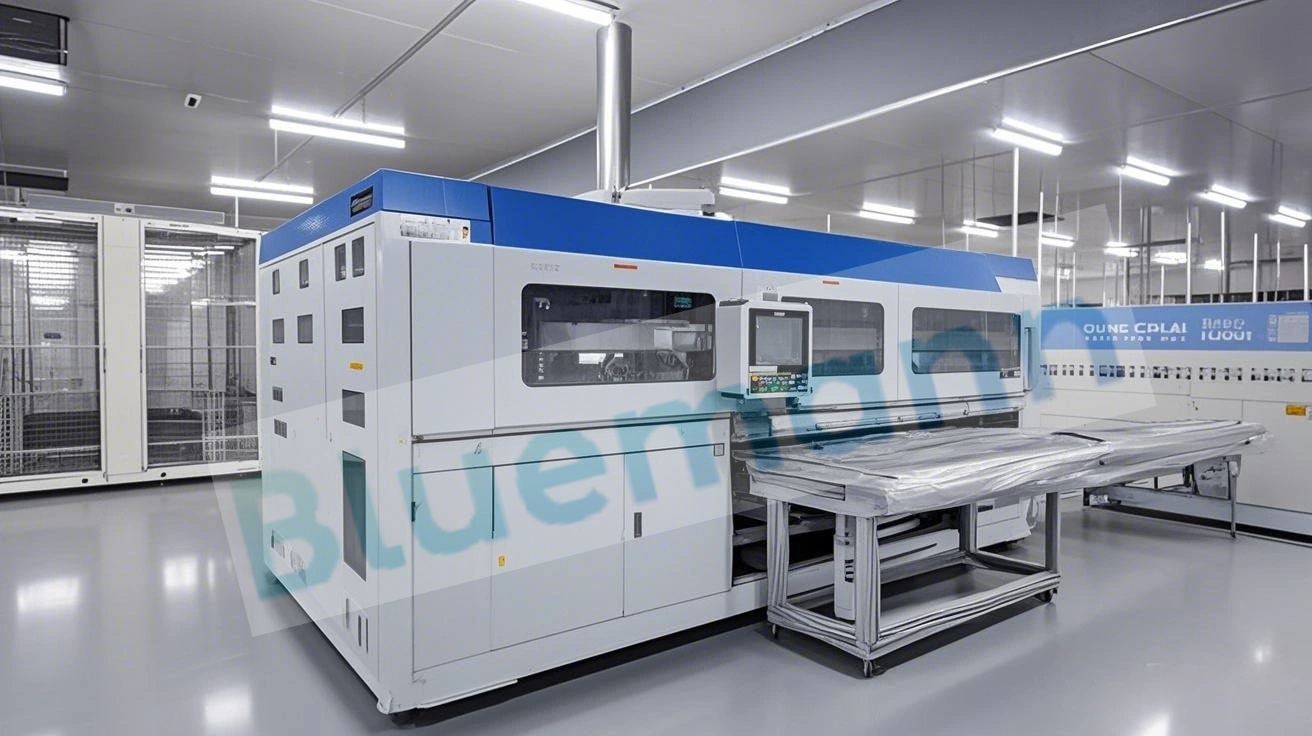In the fast-growing renewable energy sector, efficiency, precision, and long-term reliability are key factors driving the development of photovoltaic (PV) module manufacturing. Among the most critical processes in PV production is the welding of solar cells using bus bars, which directly affects the durability and performance of solar modules. To meet the increasing demand for high-quality solar panels, the Bluemann's automatic bus bar welding system has emerged as a cutting-edge solution.

This advanced system leverages stable electromagnetic induction technology to connect solar cells in both series and parallel configurations with bus bars. By ensuring seamless, accurate, and consistent welding, it provides manufacturers with a reliable way to boost productivity and deliver top-tier photovoltaic modules that meet global energy demands.
What is an Automatic Bus Bar Welding System?
An automatic bus bar welding system is specialized equipment designed to perform the precise task of connecting solar cells to bus bars during PV module assembly. Unlike manual or semi-automatic methods, this system automates the entire process, eliminating inconsistencies while improving output speed.
The system applies electromagnetic induction as its core welding mechanism. This process ensures stable energy transfer, uniform weld quality, and minimal thermal stress on sensitive solar cells. As a result, manufacturers achieve strong electrical conductivity, reduced defect rates, and enhanced mechanical strength of the final module.
Key Features of the Automatic Bus Bar Welding System
Stable Electromagnetic Induction Welding
The system uses electromagnetic induction, which provides a clean and controlled welding process without direct mechanical contact. This results in reduced damage to solar cells and consistent weld strength.
High Compatibility with PV Module Formats
Modern PV production lines often involve various cell and module sizes. The automatic bus bar welding system is designed with flexibility, supporting multiple formats seamlessly without compromising efficiency.
Fully Automated Operation
Automation minimizes human intervention, significantly lowering labor costs and reducing human error. From cell alignment to bus bar connection, the system ensures precision at every step.
Superior Efficiency and Throughput
Designed for mass production, the system is capable of handling large volumes of cells per hour. This makes it ideal for industrial-scale solar panel manufacturing facilities.
Reliable Quality Control
Built-in monitoring and inspection systems detect welding defects in real-time. Faulty cells are automatically rejected, ensuring that only fully qualified products proceed through the production line.
Energy-Saving and Eco-Friendly
With its efficient design, the system minimizes energy waste and supports sustainable manufacturing practices. This makes it well-suited for companies committed to green production.
Advantages of Using an Automatic Bus Bar Welding System
Increased Productivity
By streamlining the welding process, manufacturers can significantly enhance production capacity. Automated welding ensures that deadlines are met while maintaining consistent quality.
Improved Welding Accuracy
The precision of electromagnetic induction reduces the likelihood of misalignment or poor contact. This leads to higher module efficiency and better long-term performance of solar panels.
Reduced Operational Costs
Although the initial investment in an automatic system may be high, the long-term cost savings are substantial. Lower labor requirements, fewer defects, and less energy consumption make it cost-effective.
Enhanced Module Reliability
Consistent, high-quality welds ensure that PV modules are durable, resistant to environmental stress, and capable of delivering reliable performance for decades.
Flexibility for Future Production Needs
With the ability to adapt to new module formats and designs, the system provides future-proof scalability for PV manufacturers.
Applications of the Automatic Bus Bar Welding System
The automatic bus bar welding system is primarily used in photovoltaic module manufacturing. It plays a crucial role in connecting solar cells, which are the building blocks of solar panels. Applications include:
-
Large-Scale Solar Farms: Ensuring consistent performance in utility-scale PV projects.
-
Commercial Solar Panels: Providing reliable modules for businesses seeking energy independence.
-
Residential Solar Systems: Supporting high-quality solar panels for households.
-
Specialized PV Modules: Including bifacial or high-efficiency modules where precise welding is critical.
By meeting the diverse production requirements of the solar industry, the system empowers manufacturers to produce solar panels that deliver superior efficiency and reliability across applications.
Conclusion
The automatic bus bar welding system represents a major advancement in photovoltaic module manufacturing. By integrating electromagnetic induction welding with automated precision, it enables manufacturers to achieve higher productivity, consistent quality, and cost savings. Suitable for a wide range of solar cell and module formats, it is a powerful tool for producing reliable, durable, and high-efficiency solar panels.
As renewable energy continues to power the future, investing in advanced automation such as the Bluemann's automatic bus bar welding system ensures that manufacturers remain at the forefront of the solar industry.
www.bluemannsolar.com
Wuxi Bluemann